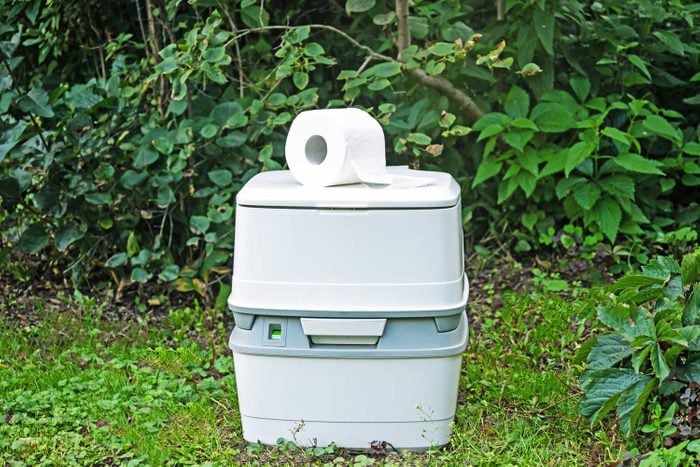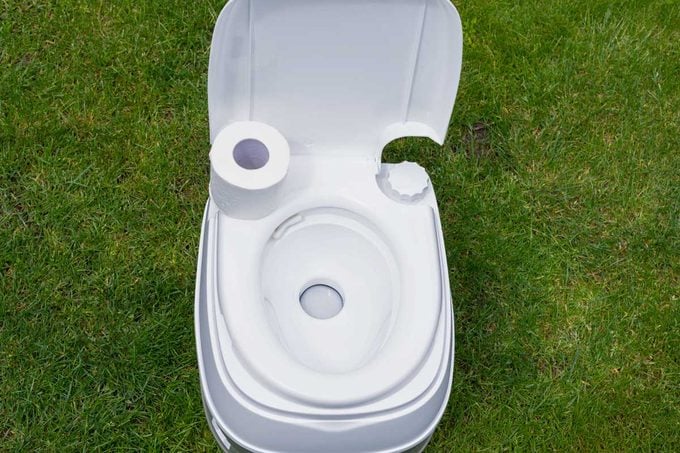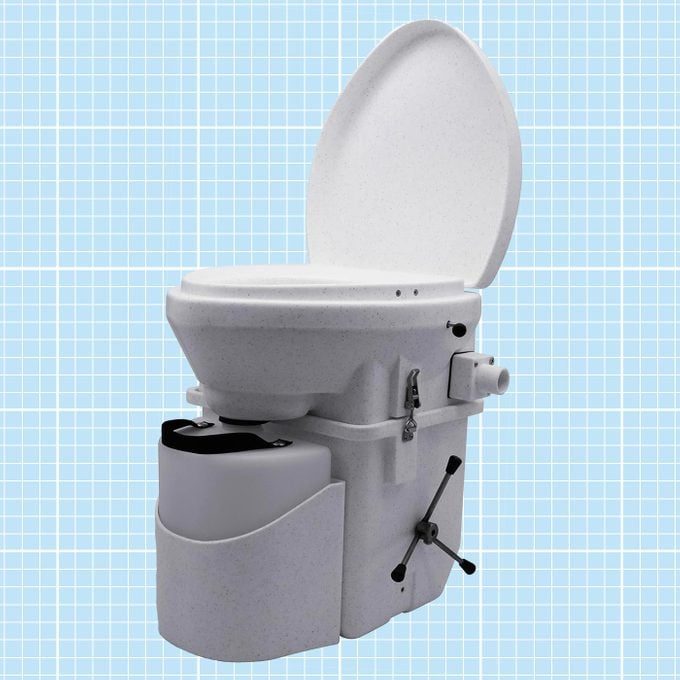Composting Toilets: Everything You Ever Wanted To Know and More
Updated: Oct. 10, 2023

A composting toilet doesn't use water and produces nutrient-rich fertilizer for the flower garden. That is, if it works the way it's supposed to.
As a contractor/handyman, my duties include maintaining two composting toilets, one on my property and another on someone else’s. Mine is currently in operation, but the one I maintain for a friend went out of service 15 years ago. The designs of the two show how quickly the technology is evolving.
My friend’s featured a sifter at the bottom of the bowl. When you moved it back and forth with a handle, it deposited dried material into a tray, which you removed when full. When the sifter inevitably clogged — waste tended to dry from the top down, not the other way around — the only way to empty the toilet was shoveling it from the top. Yuck!
Our toilet features a more sensible design, with a single catchment bucket and a separate drain for liquids. It works better, but in my mind, an ideal design would incorporate separate chambers — one for depositing fresh material, and one for composting. Such a toilet would probably be too big for most bathrooms, so it’s rare.
In any case, a contemporary single-chamber composting toilet, used according to the manufacturer’s instructions, works fine. You should be able to avoid messy problems like the ones I experienced with the older, now hopefully obsolete, model.
On This Page
What Is a Composting Toilet?
A composting toilet is one of three types of waterless toilets; the others are incinerating and chemical toilets. When you use a composting model, solid waste falls into a vented chamber with a removable bucket. Liquid waste drains into a separate container, or outdoors into a cesspool or septic system.
Venting of the catchment chamber is usually fan-assisted so the solid waste dries more quickly. When it’s dry, you spread it in your flower garden or just bury it. A larger version consists of one or more toilets with waste pipes that lead to a central catchment area, usually in the basement.
Neither version uses water, making composting toilets ideal for people who live in remote dwellings without plumbing, or who just want to save water. Because a conventional toilet uses a little more than a gallon per flush, a composting one can save two to five gallons per person per day.
How Does a Composting Toilet Work?

By what’s called aerobic decomposition. Air circulating through the composting chamber feeds bacteria and other microorganisms, which break waste down into nutrient-rich, safe-to-handle soil.
Most modern versions look like conventional toilets, complete with lid, seat and an odor-blocking plastic flapper separating the bowl from the compost chamber. When you sit, the spring-loaded flapper retracts, then springs back into position when you stand up. All odors go out the vent.
Ours features a separate drain for liquids in the front of the bowl. This keeps the compost as dry as possible so composting can proceed efficiently. Even with the drain, you sometimes must add sawdust or peat moss to the compost bucket to absorb excess moisture.
Benefits of a Composting Toilet
If any of the following conditions apply to you, you may want to consider purchasing a composting toilet:
- You don’t have water, or you want to save water: It’s a lot easier to install a composting toilet than bringing water to a place without it. If you do have water, a composting toilet can reduce your usage by as much as 60%.
- You don’t want to install waste plumbing: Composting toilets don’t need it.
- You don’t want to hire a plumber: Anyone can install a composting toilet. You simply set it in place, connect a vent pipe that goes outdoors (which may involve drilling a hole in the wall or ceiling) and plug it in.
- You want nutrient-rich compost for your garden: Waste from a composting toilet isn’t safe for edibles, but it’s a great fertilizer for flowers, shrubs and trees.
Drawbacks of a Composting Toilet
Through personal experience, I learned composting toilets do have problems. They include:
- Design: Some are simply unworkable, so be sure to check user reviews before you buy one.
- Cleaning: You must use water sparingly around a composting toilet, because the compost shouldn’t get wet. So how do you clean it? By spraying water or a cleaning solution on surfaces and wiping dry immediately.
- Potential odors: The bathroom stays odor free, but not the area around the outdoor vent. Even if the outlet is above the roof, winds can blow odors back to the ground some distance away. Trust me.
- Cost: The least expensive model costs just less than $1,000, seven to 10 times more than a conventional toilet.
Best Composting Toilets

Nature’s Head
The compact design of the Nature’s Head model allows it to fit in just about any bathroom. It comes with a foot-operated agitator for turning the compost, which greatly speeds the process. It also features a separate reservoir for liquids.
Separett Villa
This is the kind we own. The Separett Villa comes with a removable bucket and urine-diverting tube, but no reservoir. I’ve found it to be odor-free and easy to service.
It’s one of the few composting toilets that costs less than $1,000, which explains the lack of frills, like an agitator or liquid reservoir.
Sun-Mar Excel
The Sun-Mar Excel offers an extra-large capacity so it’s a good choice for families. It comes with an agitator but doesn’t separate solids from liquids. Instead, a built-in heater evaporates the liquids.
